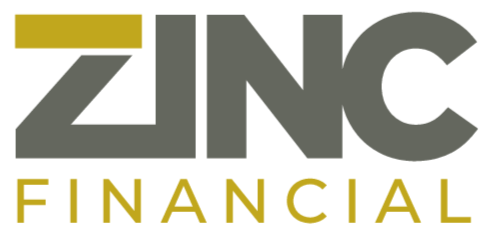Buying a new home can be an exciting yet complex process. When you find your dream home before selling your current one, or if you’re in a situation where you need to secure funds quickly, bridge loans and traditional mortgages are two financing options that can help. Both serve as means to access the necessary funds to purchase a new home, but they have distinct differences and advantages. In this blog, we’ll explore the key differences and advantages of bridge loans and traditional mortgages to help you make an informed decision when navigating the real estate market.
Understanding Bridge Loans
A bridge loan, often called a “swing loan” or “gap financing,” is a short-term loan designed to provide you with temporary financing while you transition from one property to another. This type of loan is typically used when you’ve found a new home but haven’t yet sold your current one. Here are some key differences and advantages of bridge loans:
Short-Term Nature: Bridge loans are typically short-term loans, usually lasting between 6 months to 3 years. They are not intended to be long-term financing solutions.
Quick Approval: Bridge loans are known for their faster approval and funding processes compared to traditional mortgages. This speed can be advantageous when you need to secure your new home quickly.
Interest-Only Payments: Bridge loans often require only interest payments during the loan term. This can be helpful because it keeps your monthly payments lower and manageable until you sell your existing property.
Higher Interest Rates: The convenience of bridge loans comes at a cost – they generally have higher interest rates compared to traditional mortgages. Borrowers should be prepared for this additional cost.
Collateral: Bridge loans may be secured by the equity in your current home, which is used as collateral. This provides the lender with security, but it also means that your existing property is at risk if you cannot repay the loan.
Balloon Payment: At the end of the loan term, you are expected to repay the loan in full, usually through the sale of your existing home. If your property doesn’t sell as quickly as expected, you may face a significant balloon payment.
Traditional Mortgages: A Familiar Route
On the other hand, traditional mortgages are the most common way people finance the purchase of their homes. These loans are generally long-term and have their own set of advantages:
Long-Term Financing: Traditional mortgages provide you with long-term financing options, usually spanning 15 to 30 years. This allows for steady, predictable payments over the life of the loan.
Lower Interest Rates: Traditional mortgages generally come with lower interest rates compared to bridge loans, making them a more cost-effective option in the long run.
Amortization: Traditional mortgages follow an amortization schedule, which means each payment goes toward both principal and interest. Over time, more of your payment goes towards paying off the loan balance.
Stability: With a traditional mortgage, you don’t face the pressure of selling your existing home within a short period, as you would with a bridge loan. This provides you with more financial stability.
Home Equity Building: Over time, as you make regular mortgage payments, you build home equity, which can be used for various purposes, including home improvements and as an investment for your future.

Choosing the Right Option
The decision between a bridge loan and a traditional mortgage is a crucial one, and it should be aligned with your specific circumstances and financial goals. Here are some in-depth considerations to guide you in making the most informed choice:
When to Use Bridge Loans
Immediate Purchase:
Bridge loans are ideal when you’ve stumbled upon your dream home, and you can’t afford to miss the opportunity. These loans offer a swift financing solution, allowing you to secure the new property quickly. They are especially valuable in a competitive real estate market where desirable properties may go off the market fast.
Timing is Critical: If you find yourself in a situation where timing is of the essence, a bridge loan can be your lifeline. It’s designed for those who haven’t yet sold their existing property and need to close on the new one promptly. Whether it’s a job relocation, downsizing, or a desire to move into a more suitable neighborhood, bridge loans provide the flexibility to act swiftly.
Confidence in Selling: One of the essential prerequisites for a bridge loan is the belief that you can sell your current property within the bridge loan’s term. Since bridge loans are typically short-term (6 months to 3 years), you should have a concrete plan and realistic expectations for the sale of your existing home. The proceeds from that sale will be used to repay the bridge loan.
Temporary Solution: It’s vital to remember that a bridge loan is a temporary financial solution. If you can’t sell your existing home as quickly as anticipated, you might face the pressure of repaying a substantial balloon payment, which can lead to financial stress. Therefore, bridge loans are most suitable when you have a well-thought-out plan for selling your current property.
Opt for a Traditional Mortgage When
Stability and Predictability:
If you prefer financial stability and predictability, a traditional mortgage is the way to go. With a long-term financing option, typically spanning 15 to 30 years, you can expect consistent monthly payments throughout the life of the loan. This predictability makes budgeting and financial planning more manageable.
Lower Interest Rates: Traditional mortgages generally come with lower interest rates than bridge loans. Over the long term, this can result in significant savings. Lower interest rates translate to lower monthly payments and less financial strain in the years to come.
Amortization Benefits: Traditional mortgages follow an amortization schedule, which means each monthly payment contributes to both the principal and interest. Over time, more of your payment goes toward reducing the loan balance, and you build equity in your home. This can be a valuable asset for future home improvement projects, investment, or simply as a nest egg.
No Rush to Sell: With a traditional mortgage, there’s no immediate pressure to sell your existing home. This can be advantageous in situations where selling your current property quickly is not feasible or desirable. You can take your time, find the right buyer, and get the best possible deal.
In conclusion, bridge loans and traditional mortgages serve distinct purposes in the real estate market. Understanding the key differences and advantages of each can help you make the right financial decision when purchasing your new home. It’s essential to consult with a financial advisor or mortgage professional to determine which option aligns best with your unique situation and long-term goals. Whether you choose the speed and flexibility of a bridge loan or the stability of a traditional mortgage, the key is to make a decision that suits your needs and secures your future in the home of your dreams.



